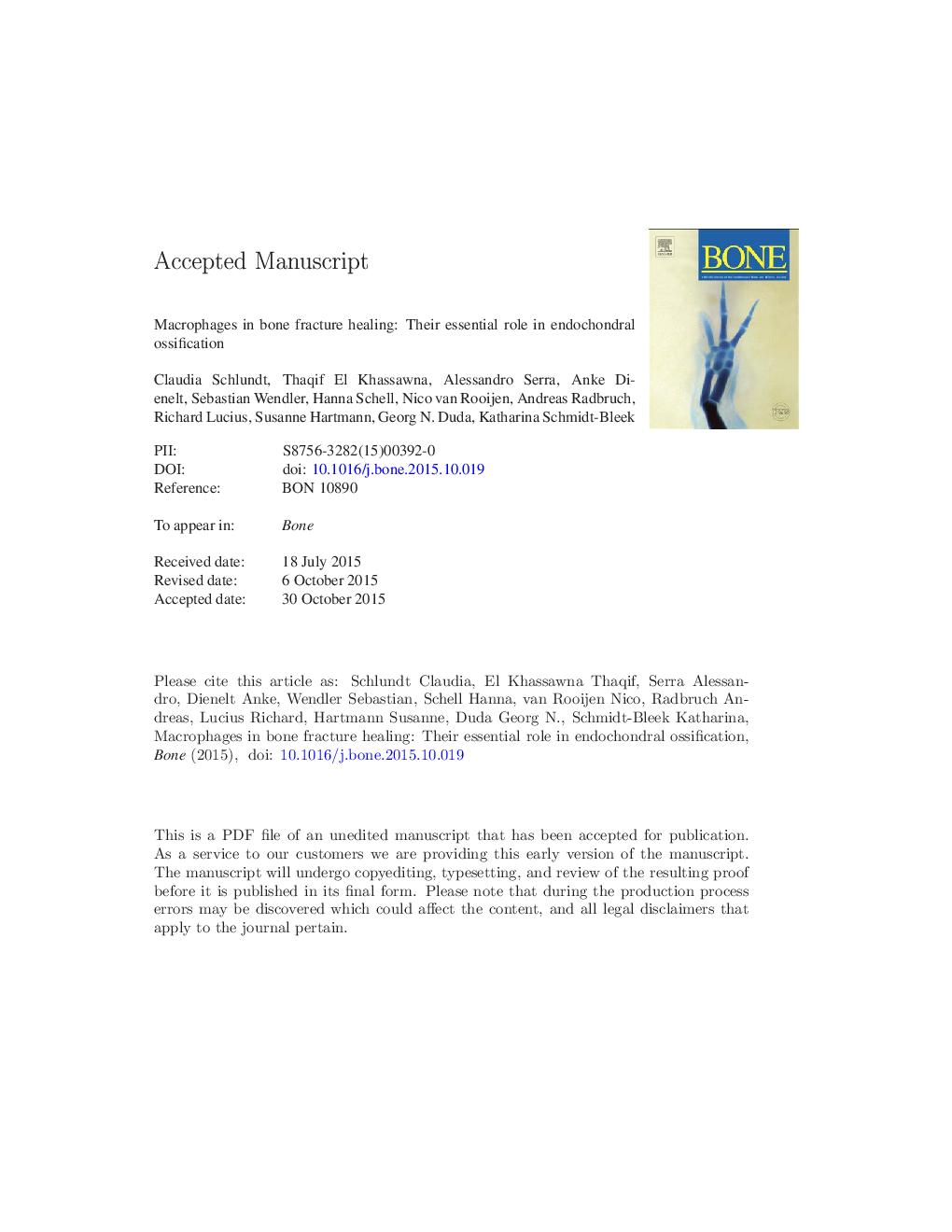| Article ID | Journal | Published Year | Pages | File Type |
|---|---|---|---|---|
| 5585097 | Bone | 2018 | 42 Pages |
Abstract
This study examined the impact of in vivo induced macrophage reduction, using clodronate liposomes, on the different healing phases of bone repair in a murine model of a standard closed femoral fracture. A reduction in macrophages had no obvious effect on the early fracture healing phase, but resulted in a delayed hard callus formation, thus severely altering endochondral ossification. Clodronate treated animals clearly showed delayed bony consolidation of cartilage and enhanced periosteal bone formation. Therefore, we decided to backtrack macrophage distribution during fracture healing in non-treated mice, focusing on the identification of the M1 and M2 subsets. We observed that M2 macrophages were clearly prevalent during the ossification phase. Therefore enhancement of M2 phenotype in macrophages was investigated as a way to further bone healing. Induction of M2 macrophages through interleukin 4 and 13 significantly enhanced bone formation during the 3Â week investigation period. These cumulative data illustrate their so far unreported highly important role in endochondral ossification and the necessity of a fine balance in M1/M2 macrophage function, which appears mandatory to fracture healing and successful regeneration.
Related Topics
Life Sciences
Biochemistry, Genetics and Molecular Biology
Developmental Biology
Authors
Claudia Schlundt, Thaqif El Khassawna, Alessandro Serra, Anke Dienelt, Sebastian Wendler, Hanna Schell, Nico van Rooijen, Andreas Radbruch, Richard Lucius, Susanne Hartmann, Georg N. Duda, Katharina Schmidt-Bleek,
